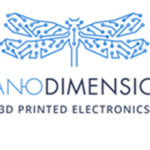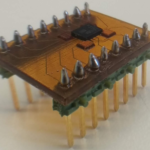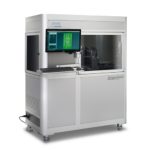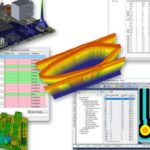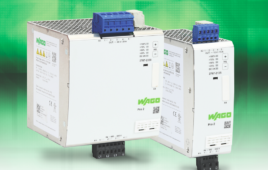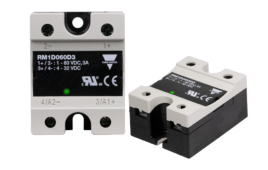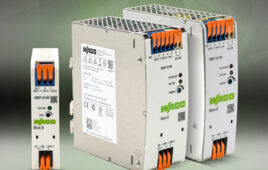Three-D-printing isn’t just for mechanical parts. There are machines on the market able to produce sophisticated printed circuit boards having multiple layers, complete with passive components fabbed with the same conductive inks and dielectrics used to make circuit traces.
Most additive machines aimed at PCB work use ink jetting to lay down PCB traces and other features. The print heads squirt out ink in the usual fashion, but the ink is engineered to have either conductive or electrical dielectric properties. Deposited inks typically undergo a curing step consisting of a heat treatment, usually on the bed of the printer. Many machines are able to produce boards on what might be called flimsy substrates such as coated paper or thin plastic. So the heat during the curing process must be kept relatively low, typically lower than the heat deflection point for common plastics.
Some additive machines aimed at electronics fab more than just the PCB. The Squink by BotFactory is a combo PCB printer/pick-and-place machine for surface-mounted components. After finishing PCB traces, the machine picks components from a tray, corrects alignment and rotation, and uses on-board computer vision to place components in the correct spot. Each component is picked from a tray, not a rail, to keep the setup simple.
The Squink uses a single tool head for both circuit printing and SMD placement. The first head deposits the conductive ink on the PCB. The operator then swaps the conductive ink cartridge for a conductive glue dispenser. Once the glue is in place, a vacuum pick-up assembly gets swapped in to pick-and-place components.
Rather than using ink jets, the V-One from Voltera extrudes paste through a nozzle. It can deposit 8-mil traces with a pin-to-pin pitch of 0.8 mm on a print area of 5.5 x 4 in. The V-One has a single print head. So the process of printing a board involves plugging in the ink cartridge containing conductive ink, laying down traces, swapping out the cartridge for one containing dielectric, then dispensing an insulating layer. A third cartridge can be swapped in to dispense solder paste. The solder paste module can work on boards made with traditional etching methods, and these boards can be reflow soldered on the print bed thanks to the 550-W heater it contains.
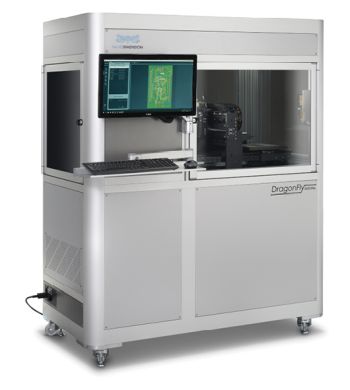
Nano Dimension’s 3D printer handles sophisticated PCB designs with its ability to do 3.5-mil trace widths and a similar pitch. The Dragonfly also has a big print bed, 20×20 cm., or almost eight inches on a side.
Another high-end additive machine comes from Optomec. Its print heads are offered in the form of print engine assemblies. The assemblies can be built into conventional automation equipment such as CNC positioners or special-purpose motion control systems. Several print engines can be combined to print simultaneously as for mass production settings.
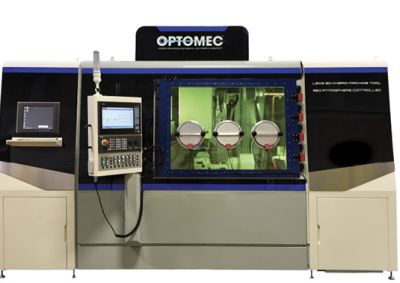
Optomec print heads, called Aerosol Jets, create a tightly focused beam of ink by first atomizing the ink supply into a mist, then surrounding it with inert gas. This sheath gas speeds up the flow of the atomized ink as it traverses between the head and the substrate and behaves as a focusing mechanism. These print nozzles deliver ten-micron-diameter collimated streams of atomized ink.
You may also like:
Filed Under: 3D printing • additive • stereolithography, Rapid prototyping, Make Parts Fast, MOTION CONTROL, ELECTRONICS • ELECTRICAL, Analog IC Tips

